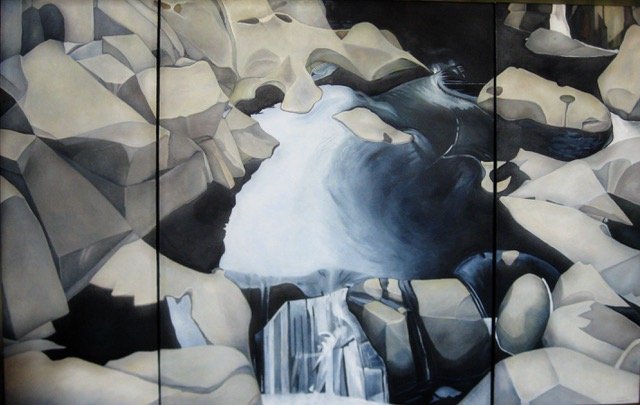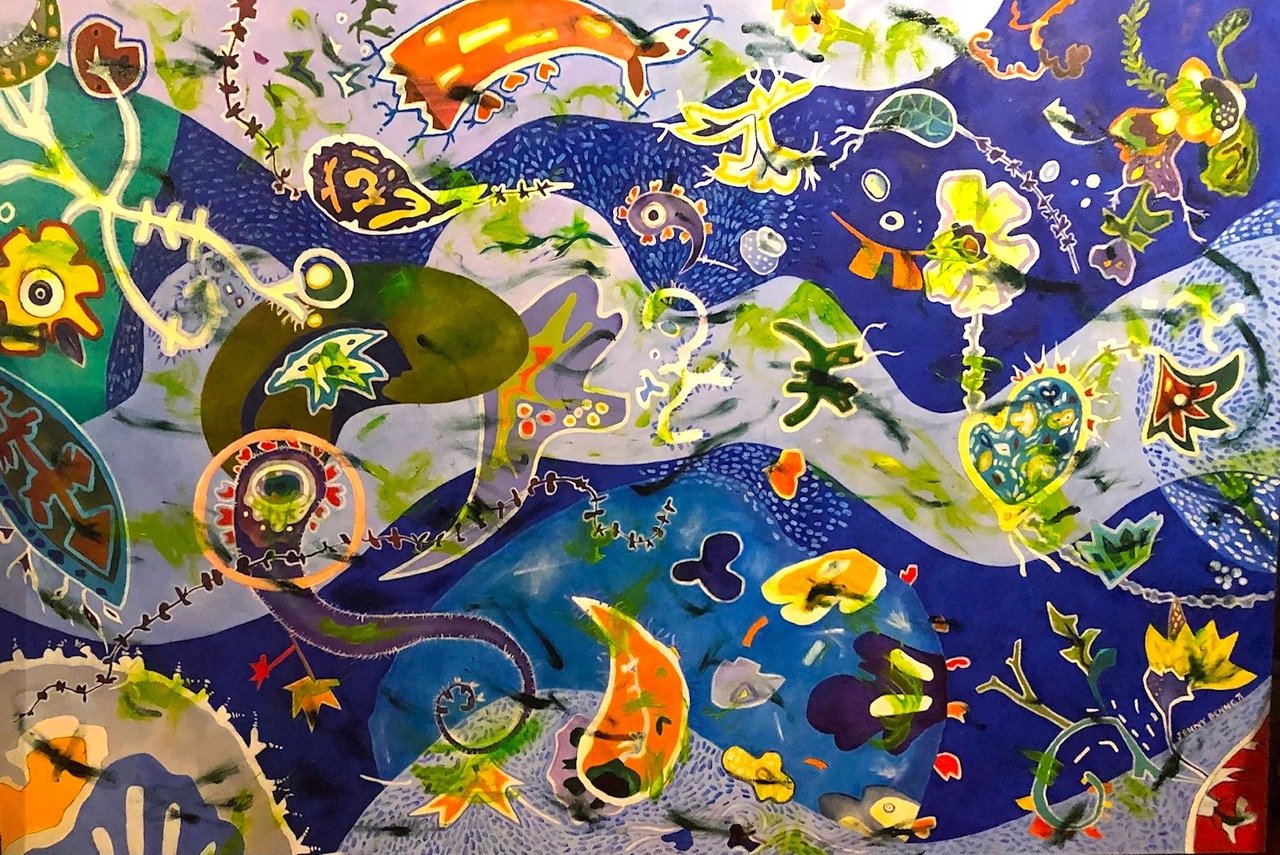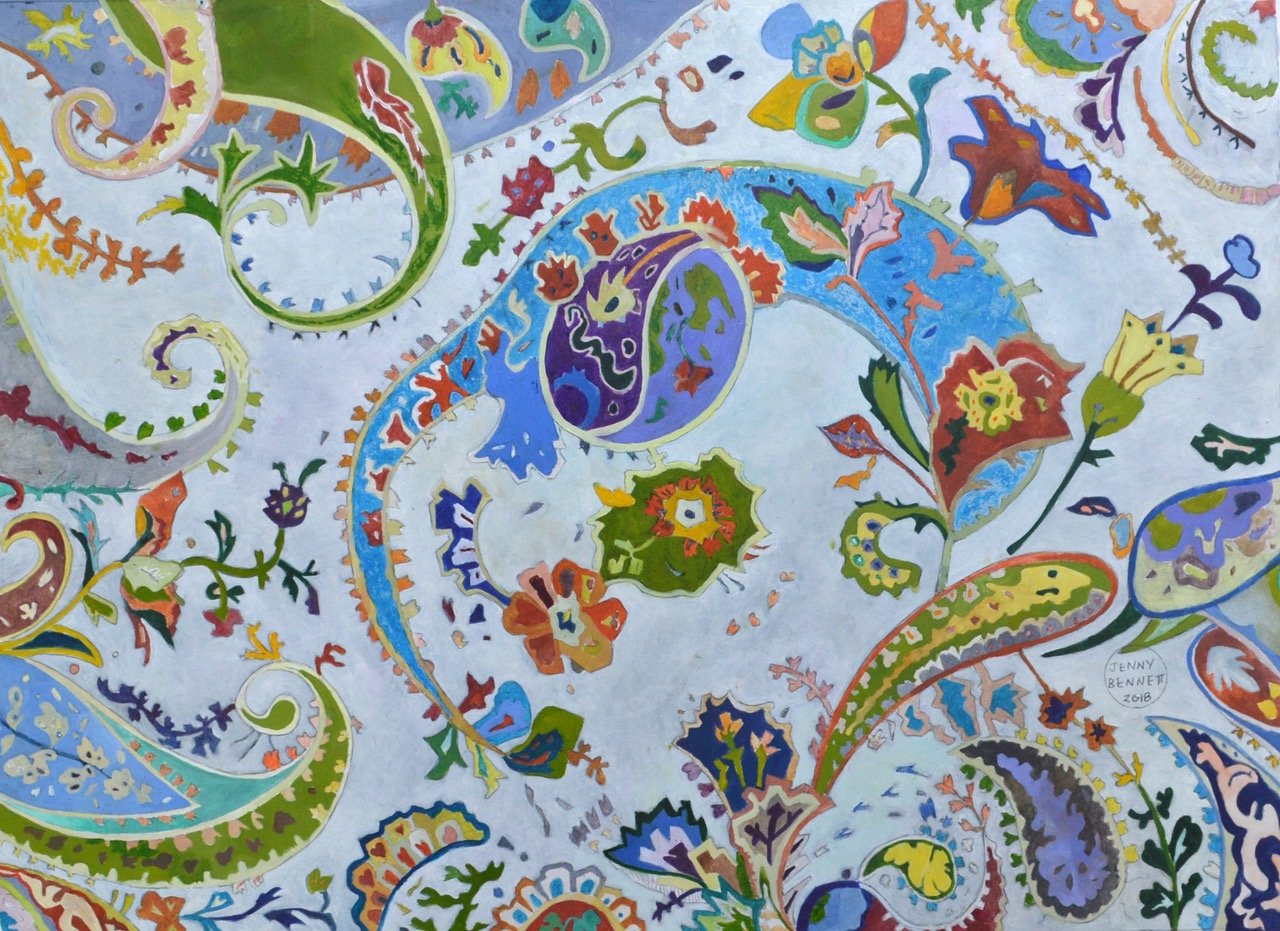Interview
Jenny Bennett
Jenny McLellan Bennett had a rural childhood. After attending universities in Dunedin and Auckland, she began painting. She has also explored a wide range of media including pastel, printmaking, clay sculpture, puppetry and masks. Bennett has shown her work nationally and internationally, travelling to venues in Florence and Chianciano, Italy for biennales. Her paintings are found in collections around the globe. After years of landscape painting including rock and water works, and New Zealand native flora (Nikau series) she made a series of floral works which led to the Paisley series. Alongside the art came a passion for genealogy and the use of DNA. The depiction of stylised flowers, plants etc. and the history of paisley through time and space became a metaphor for her ancestral roots. Her latest works reflect an increasing fascination with abstraction.
What is your background and how did you start your journey in the art world?
“I was born Jennifer McLellan in rural Hawkes Bay, New Zealand in 1950. I attended Otago and Auckland Universities and graduated with an M.A. [Hons] Anthropology. As a young person, I was discouraged from following my passion for art and was steered in an academic direction. After the birth of my first child, I began art classes and began painting in oil. I also experimented with a number of media attending summer schools and various classes. These included clay sculpture, puppetry, pastel drawing, mask making and performance, flax weaving, print making; lithography etching woodblock.”
What does your work aim to say? Does it comment on any current social or political issues?
“I paint to make something from nothing: to communicate my visions to others; to put people where I have been. Like Anais Nin, I believe that art like writing, painting, music provides us with the "anti toxins" we need to live. I paint because I want to record, communicate, recreate, create; an idea, experience, object, landscape or a feeling. I believe art whether it be painting, music, drama etc can lift us out of everyday routine. Participation is the key; the doing or the viewing or the listening. “I strive to make beautiful and or challenging work.” Generally my work is not overtly political although some issues do trigger an artistic response.”
Do you plan your work in advance, or is it improvisation?
“I enjoy putting things together; colours, shapes, lines; to make order from chaos. This involves decision making and when a work is going well there is a balance between freedom and control as the decision making becomes less conscious and more intuitive. I start with an idea of how it will look and this involves drawings and photographs which sometimes I print. Inevitably there is a battle as the layers go on and this can result in innovation. There comes a point where you lose the original concept and go with a new one and this is exciting. There comes a point when it seems right and then it is finished. This can take time, years sometimes, or not.”
Are there any art world trends you are following?
“I tend to resist art trends, although, I do believe there is a collective consciousness and I have found that if you are working round other artists there are elements you absorb. It will be interesting to look back on how the world wide web has affected our brains and art specifically. Previously, if you lived beyond access to original art, inadequate reproductions were the only options.”
What process, materials and techniques do you use to create your artwork?
“I prefer to use oil paints as I love their richness, texture and malleability. I know the colours so I can colour mix without having to think about it. I have painted on board but usually on stretched linen or canvas and I build up layers until I get the effects I am happy with.”
“I paint to make something from nothing: to communicate my visions to others; to put people where I have been.”
What does your art mean to you?
“Art has been a constant in my adult life. It is what I do and what I think about. It includes more than just fine art. Nature and conservation are also very important; gardening, cooking, spinning, knitting dressmaking and recycling; using natural and organic materials. Women's work is not often recognised as creative but it is.”
What’s your favorite artwork and why?
“I have made works which I would choose over others but not one favourite piece. It is fascinating to evaluate a painting over time especially if you haven't seen it for a long time. After several years of exploring various themes, mainly landscapes, it was exciting to begin a new series of exploring flora, involving new colours and abstraction. The recent Paisley series with its flowing organic imagery developed naturally from the floral series and the latest “Hot Flotsam”, a large work reflects an increasing emphasis on abstraction and an acknowledgement of global warming and pollution.”
Have you had any noteworthy exhibitions you'd like to share?
“I travelled to Italy for the Biennale of Chianciano, Tuscany and 2009 and 2011 and in 2013 I was guest artist in the inaugural Izmir Biennale of Art, Turkey. My work was in a group show 'Power of Perception held at Raw Gallery NYC.”
Website: www.jennybennett.com
Instagram: @jennybennett2080









